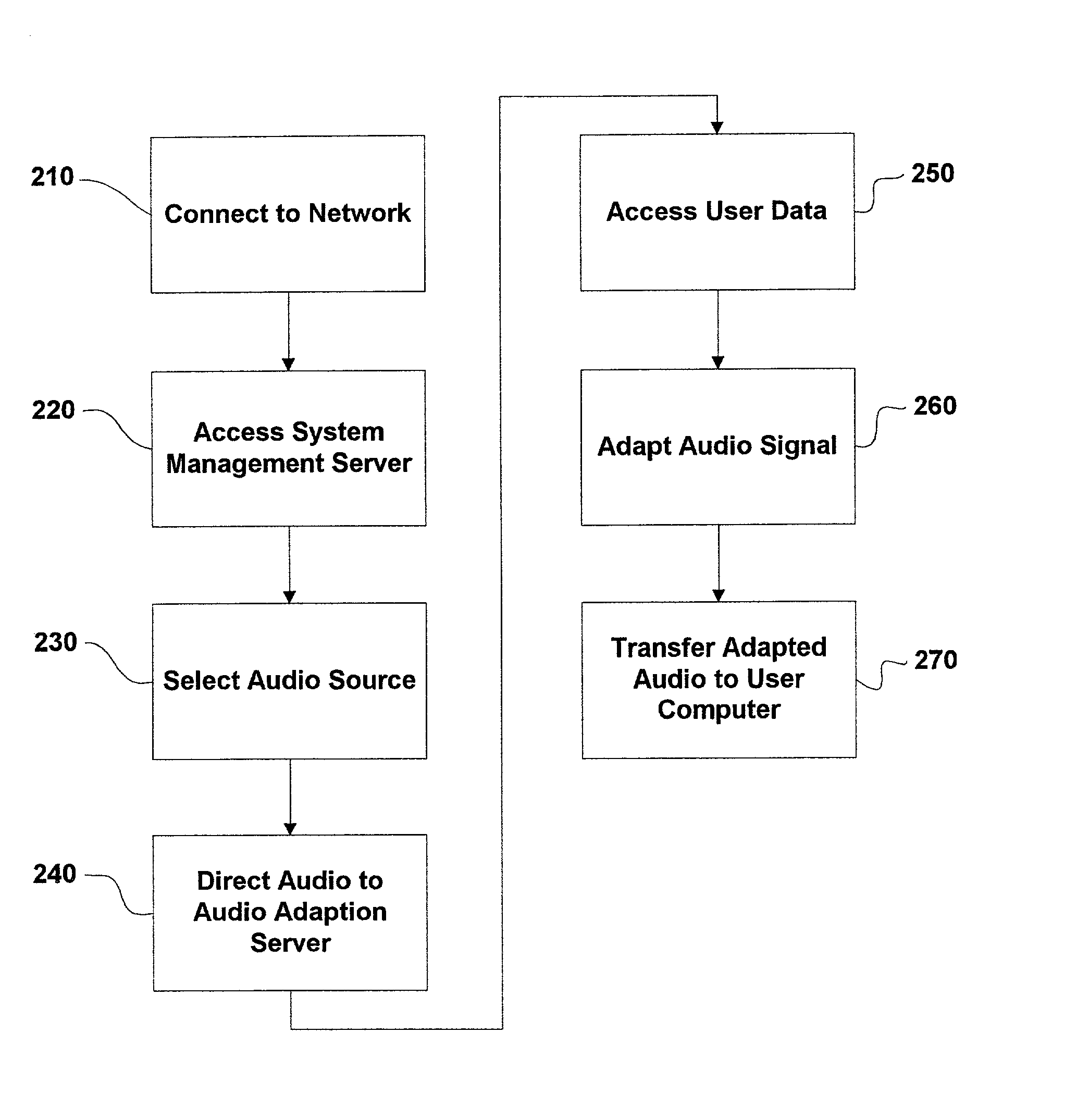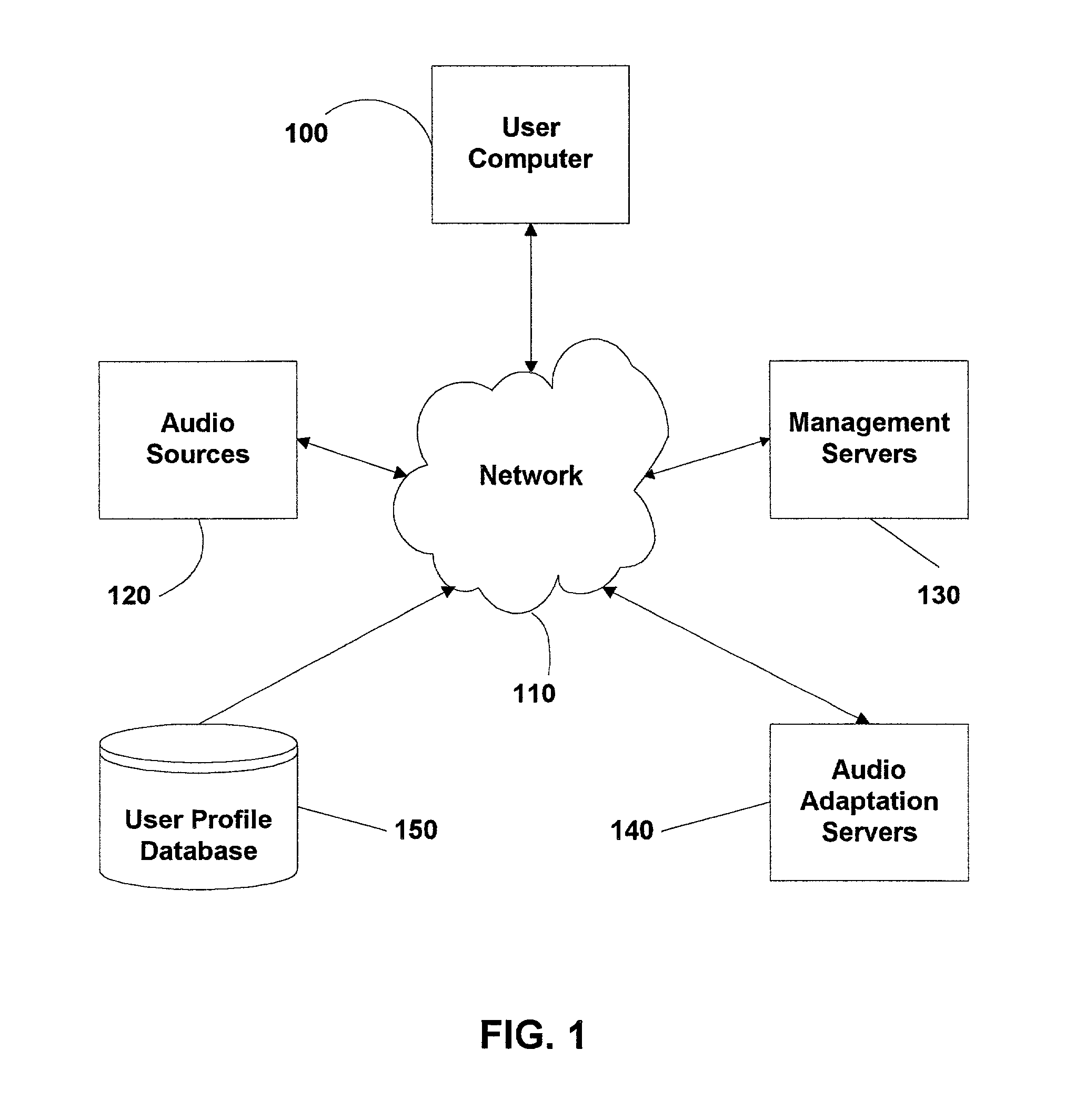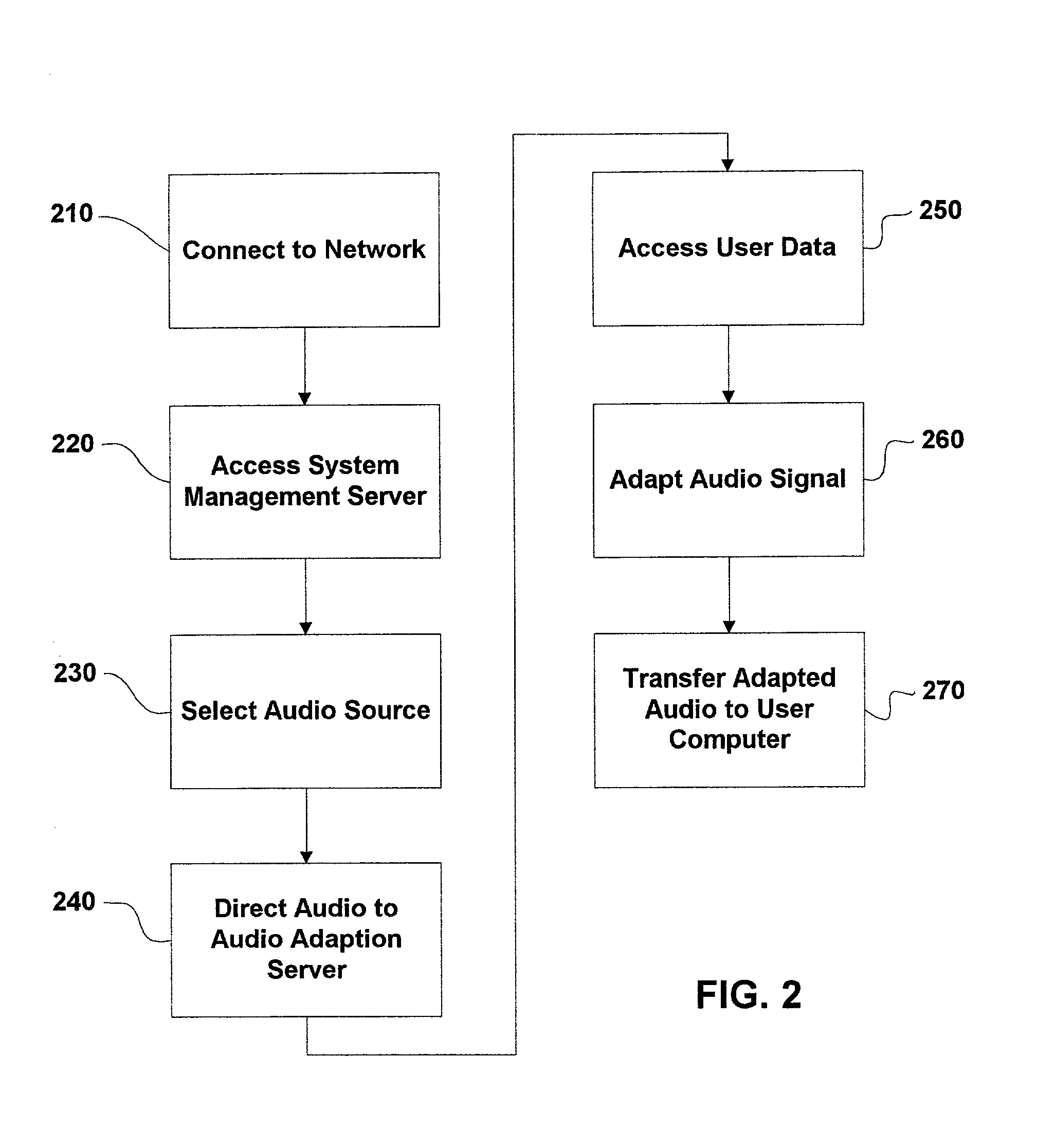Adaptation of audio data files based on personal hearing profiles
a technology of personal hearing profiles and audio data files, applied in the direction of diagnostic recording/measuring, instruments, stereophonic circuit arrangements, etc., can solve the problems of limiting the quality of the audio output, reducing the frequency range, and programmability of the hearing aid
- Summary
- Abstract
- Description
- Claims
- Application Information
AI Technical Summary
Problems solved by technology
Method used
Image
Examples
Embodiment Construction
[0023] FIG. 1 depicts an exemplary operating environment of an embodiment of the invention. This includes a user's computer 100 connected to a network 110. The computer 100 preferably includes an audio output capability and the network 110 can be a local network, wide area network such as the Internet, or both. Also accessible through the network are audio sources 120, system management servers 130, audio adaptation servers 140, and user profile database 150. The audio sources 120 can be files with audio data or streaming data with audio components. Management servers 130 control the execution and communication between elements of the invention. Audio adaptation servers 140 perform the modification of audio data in response to hearing characteristics and preferences of the user. Information regarding these hearing characteristics and preferences are stored in the user profile database 150. In addition to user hearing characteristics, the user profile database 150 can include user ac...
PUM
 Login to View More
Login to View More Abstract
Description
Claims
Application Information
 Login to View More
Login to View More - R&D
- Intellectual Property
- Life Sciences
- Materials
- Tech Scout
- Unparalleled Data Quality
- Higher Quality Content
- 60% Fewer Hallucinations
Browse by: Latest US Patents, China's latest patents, Technical Efficacy Thesaurus, Application Domain, Technology Topic, Popular Technical Reports.
© 2025 PatSnap. All rights reserved.Legal|Privacy policy|Modern Slavery Act Transparency Statement|Sitemap|About US| Contact US: help@patsnap.com



